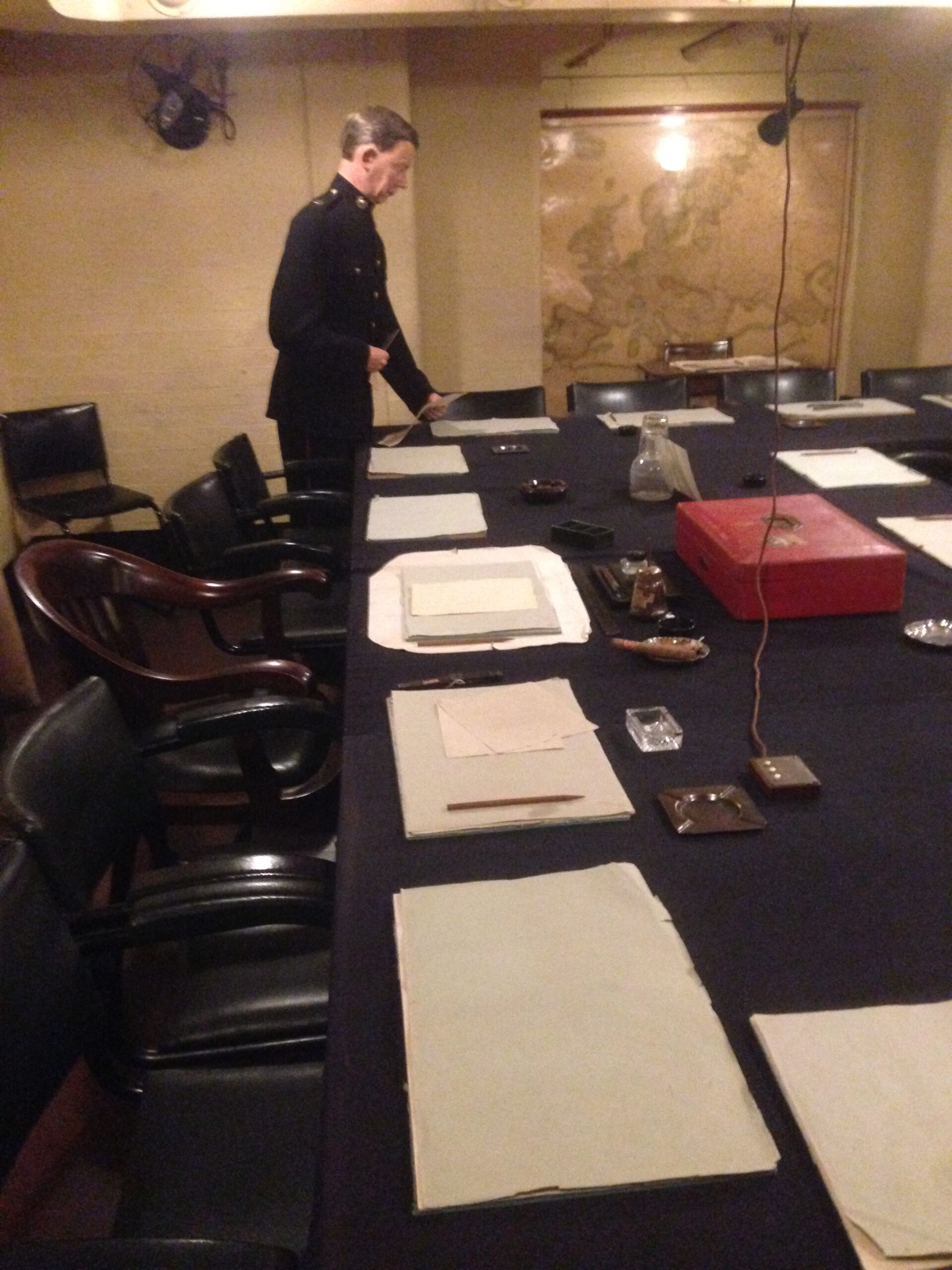
I’ve done so many tours of the Churchill War Rooms recently (né Cabinet War Rooms, né Central War Room) that I’m half-expecting them to give me my own office there. In March alone I did six tours, and there are another half a dozen already slotted in for this month (april).
The place is – quite rightly – a key site, particularly for US visitors, and the bounce back of small group and family tours from the USA is manifesting in the repeated requests I get to show people round. We are though, still in that happy state where although visitor numbers are up, they are not anywhere near as overwhelming as pre covid. (Shortly after The Darkest Hour came out the queues could be three hours or more long for those who hadn’t booked a timed slot.)
It’s fortunate then that I still get a kick out of the venue, both the historic rooms and the attached Churchill Museum. There’s a video I made early in lockdown about the cabinet room itself, and rather than use this blog post to give you the ‘grand tour’ of the museum, here are some of the smaller details that it’s easy to miss, but which tell some deep tales about life in the rooms and about the war.

This board, by the door to the Map Room, gives an insight into the threats faced. Bombing is ‘priced in’ to our thoughts about London in the Blitz; most of us also know about the fears of poison gas being used on civilian areas (nearly 40m gas masks were issued to the population in the run up to the war), but the warning that consistently makes me more aware of the threats faced is the signal for ‘ground attack’. The rooms remained a secret throughout the war, but the fear was that a hit squad of German paratroopers might land in St James’s Park and ‘decapitate’ the political and military commands.
There are rifle racks throughout the building (and a platoon of Guards was based on the floor above), so if that klaxon had sounded then the soldiers and marines working in the rooms would have grabbed a gun and gone to their muster stations. There would have been hand to hand battles in the maze of narrow corridors and small rooms throughout the complex.
Ring for Jeeves

A brown cable drops from the ceiling in Churchill’s room to a set of communication buttons on his desk. Press the top most button on this pad and it would call Churchill’s Private Secretary. The middle button would summon his detective (i.e. bodyguard), called if the PM was going to leave the building. And the third? Churchill’s butler.
It’s always worth remembering that Winston Leonard Spencer Churchill was no ‘man of the people’ but from the bluest of bloods, as upper crust as they come, a scion of one of the great families of England (in fact, until his cousin’s son was born in 1897, Churchill was the heir presumptive to the Dukedom of Marlborough). He travelled everywhere with his valet, did not dial a number on a telephone until into his 70s, never rode on a bus, travelled on the tube just the once. The scene in The Darkest Hour where Churchill chats on the underground to a representative sample of yer actual Londoners is (whisper it) totally fabricated.
It’s always two minutes to five
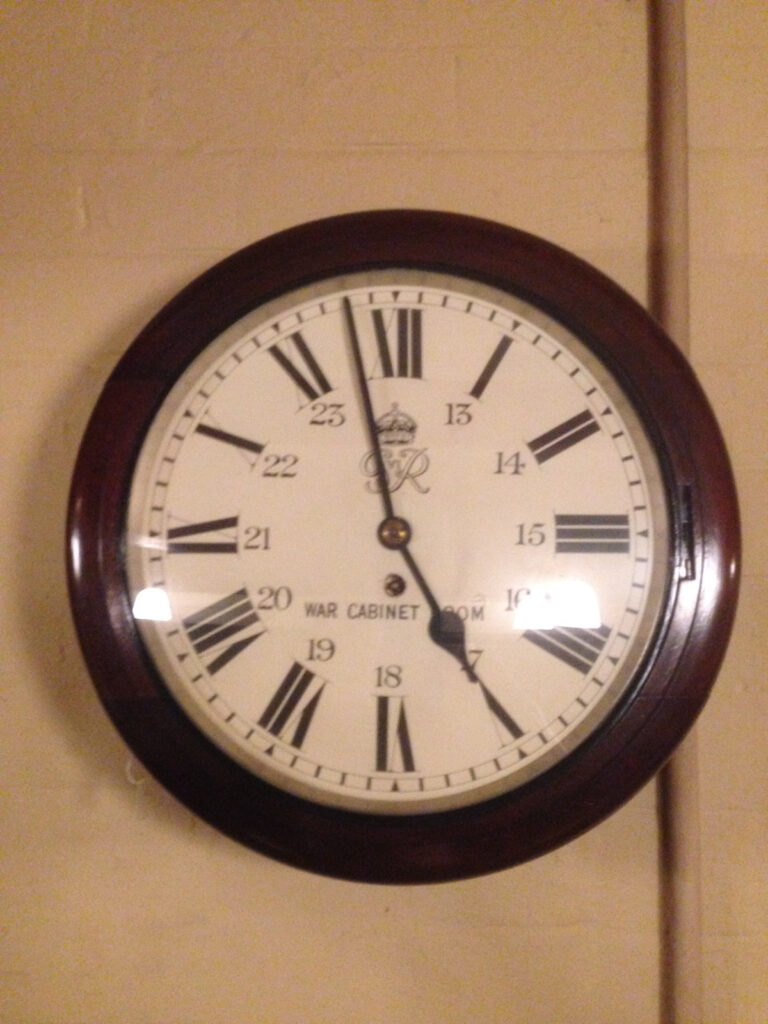
All the clocks in the War Rooms are set at two minutes to five. The first cabinet meeting was held here at 5pm on 15 October (after the Cabinet Room in Downing Street had been damaged in a raid during the night of the 14th), so the conceit is that we are a couple of minutes before that meeting starts, the room receiving its final preparations before the members of the Cabinet take their seats.
There’s a second reason though, and that’s that not all the clocks work (or keep accurate time), so rather than have an inconsistent display in the different rooms they have all been frozen at one time.
John Heagerty’s Sugar Lumps
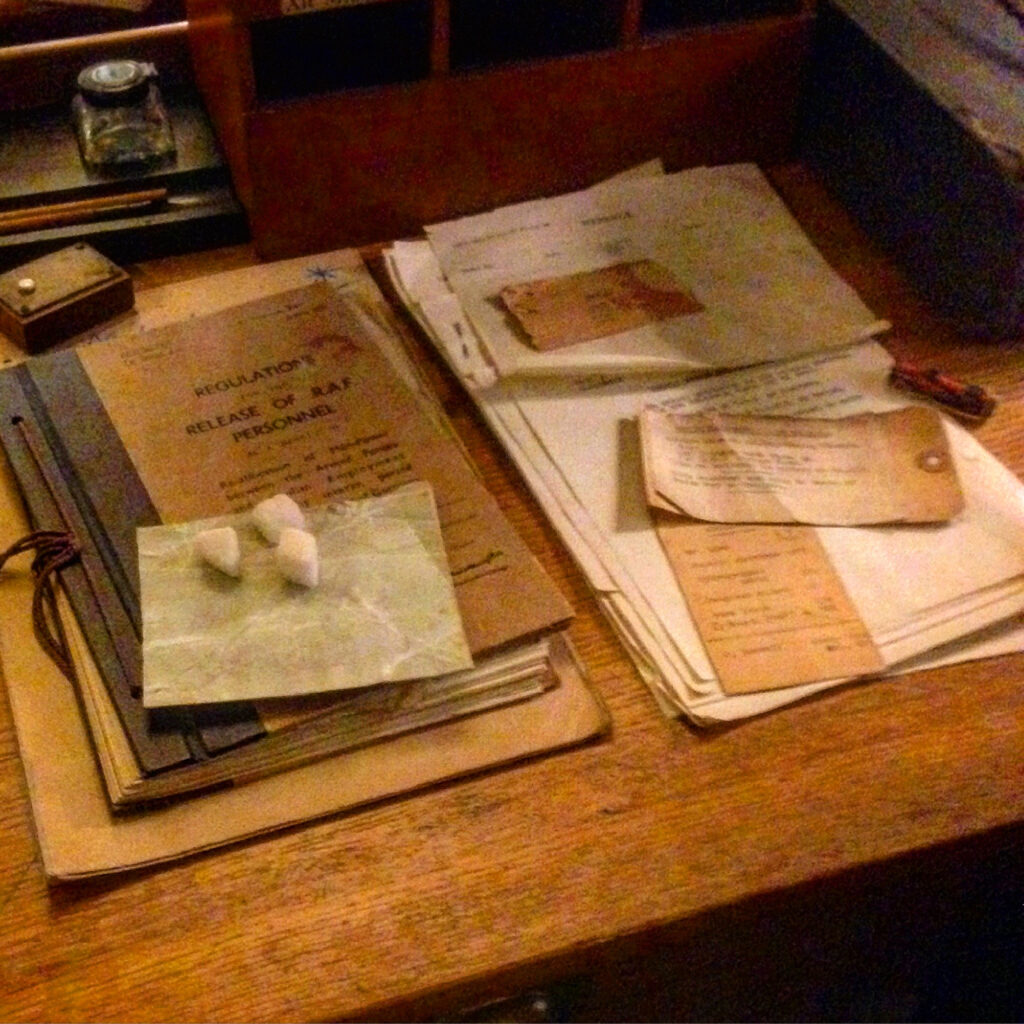
On the desk in the Map Room are three sugar lumps on a piece of blue paper. These are genuine WW2 bits of sugar, found in an envelope in the desk drawer when the rooms were being transformed into the museum in the mid-80s. The name on the envelope is John Heagerty – Wing Commander Heagerty – who had manned the Map Room Air Desk for more than five years co-ordinating information about air operations. A veteran of the first World War, he was shot down over enemy lines in 1917 by the fabled German Ace, Manfred von Richtofen (‘ the ‘Red Baron’).
Heagerty was the last Camp Commandant (the officer in charge of the rooms) so it would have been him that turned out the lights, locked the doors and handed back the keys in August 1945, six years after the rooms had become operational. In the busyness of that day, he obviously forgot this chunk of his sugar ration that he’d been keeping safe in his desk.
Churchill’s Chair
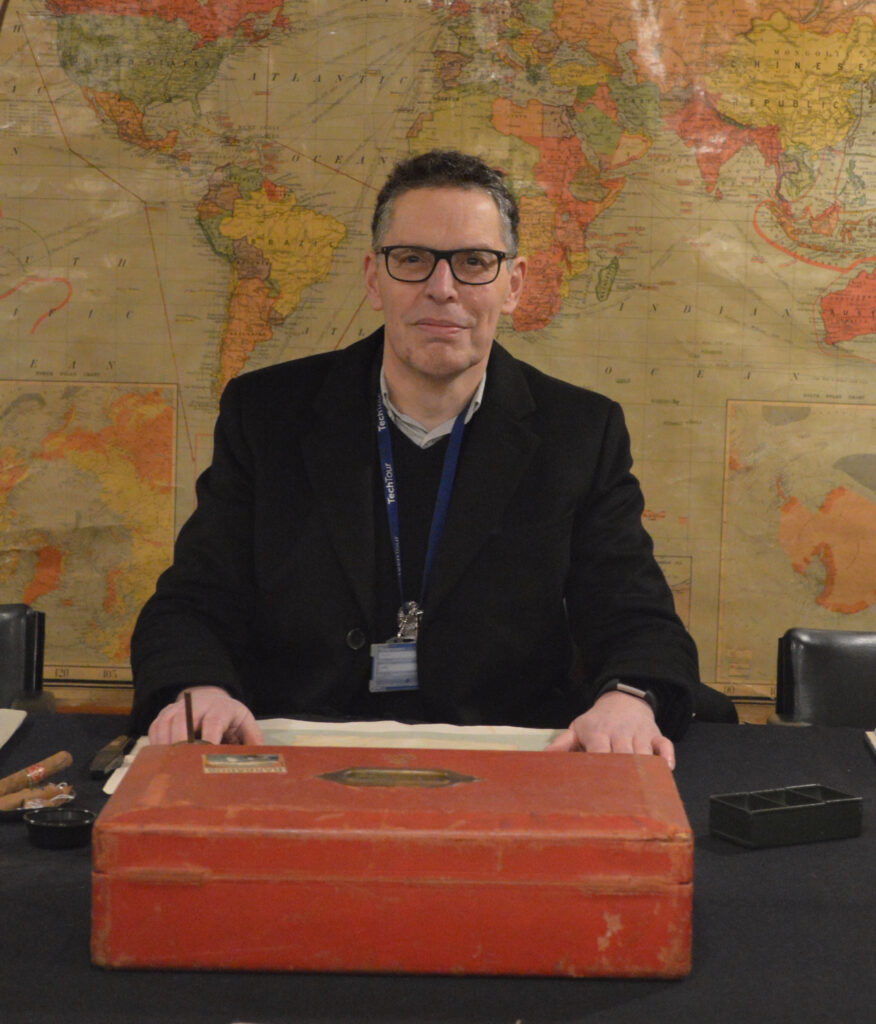
This is me sat in Churchill’s chair in the Cabinet Room. It’s the only wooden chair in the room and is dead centre of the top row of furniture, controlling the rest of the space.
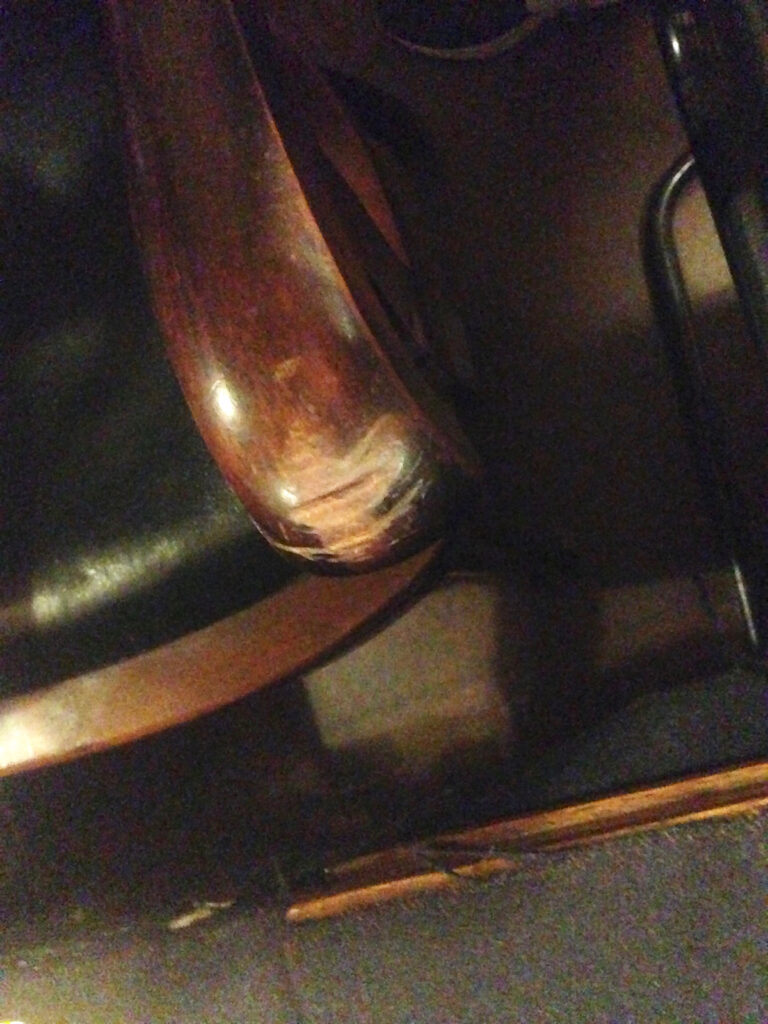
Look on the right hand arm and one can see the marks made by Churchill’s signet ring, but it is the grooves on the left hand arm that are most of interest, because these are where Churchill’s fingernails have worried away at the wood. That little detail reveals more about the stress and tension of those wartime cabinet meetings than any long article could.
The Convoy Losses Chart
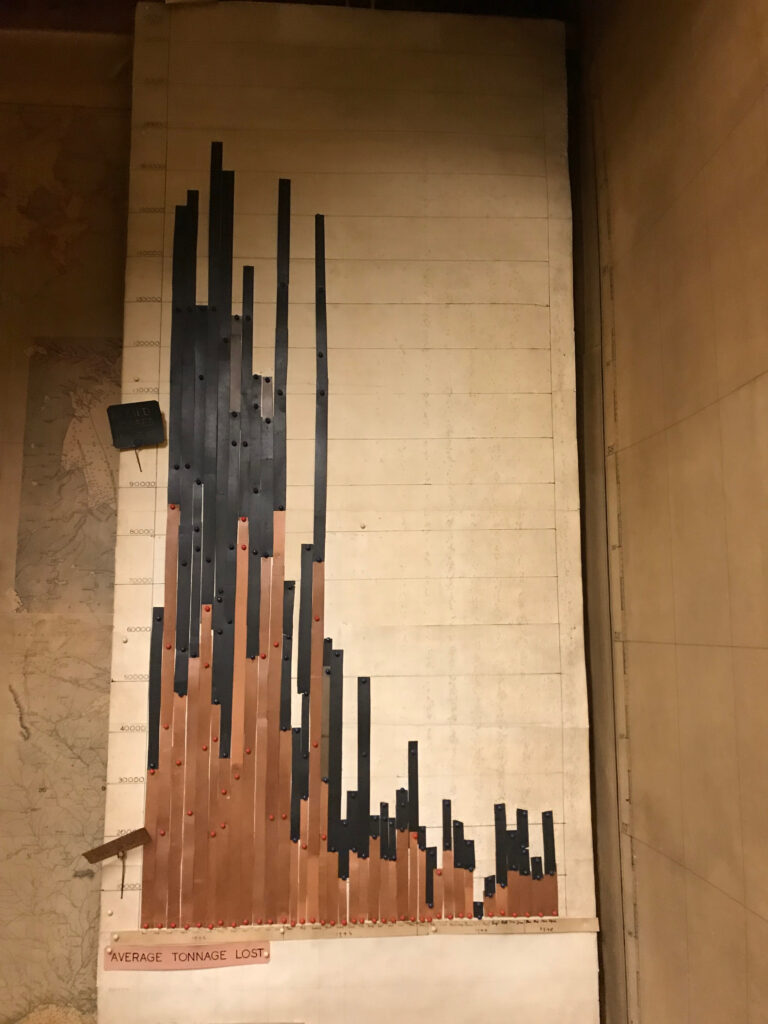
In the far corner of the Map Room, just past the big convoy map that dominated one wall, is a bar chart. This shows the monthly allied shipping losses from January 1942. In the early part of that year the German Navy upgraded their Enigma machines. These were the ‘secure’ cipher system that had been broken by the codebreakers of Bletchley Park, but the new machines added an extra degree of complexity which meant that for the next year the allies were in the dark. German submariners called this the ‘second happy time’ and were scoring great successes against the allied convoys – so much so that for much of 1942 more ships were being sunk than could be replaced. The Battle of the Atlantic seemed to be swinging decisively in the German’s favour.
But the capture (a ‘pinch’) of one of the new machines and a huge amount of effort at Bletchley saw the new machines broken by early 1943. Couple this with better detection and engagement techniques from the anti-submarine forces and by May of 1943 the Germans were losing a u-boat a day on average. Allied losses continued, but they were less than a quarter of what they ahd been the previous year – the Battle had been won by the allies.
There’s more Churchilliana around this blog – you’ll find a reading list here, a map of London locations here, and even something about the Churchill statue in Parliament Square here. And if you want some vids about the War Rooms themselves, there are bits here and here.


I am planning to visit Churchills War Rooms so I’m thrilled to have this excellent introduction! Thank you so much!